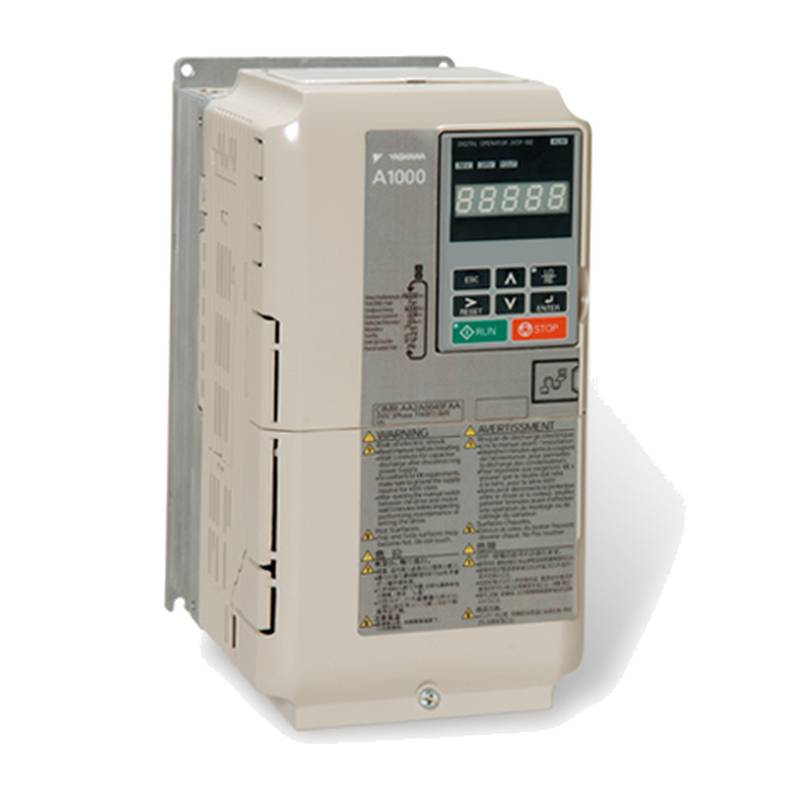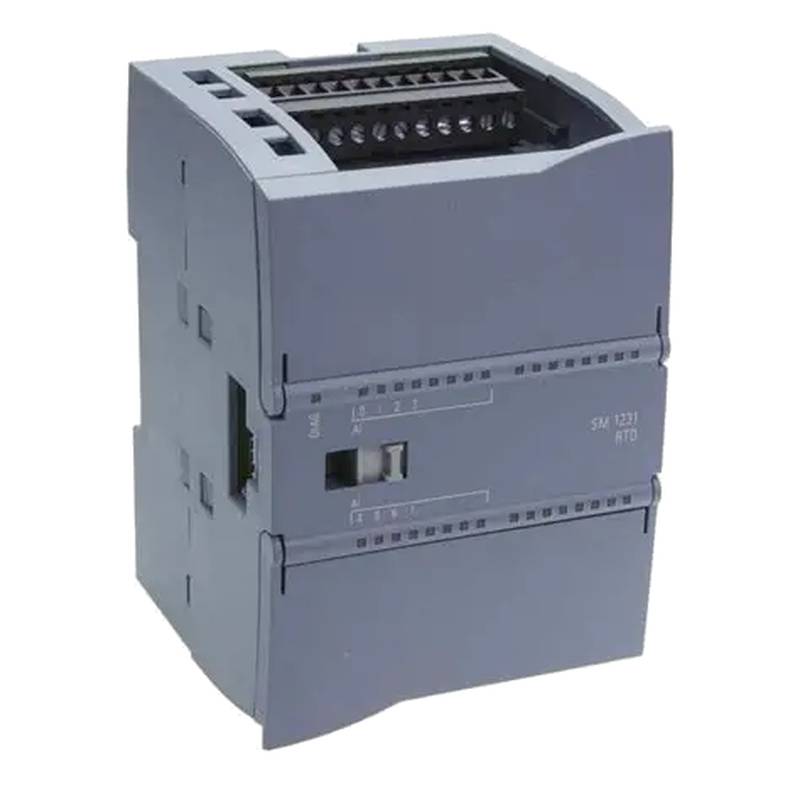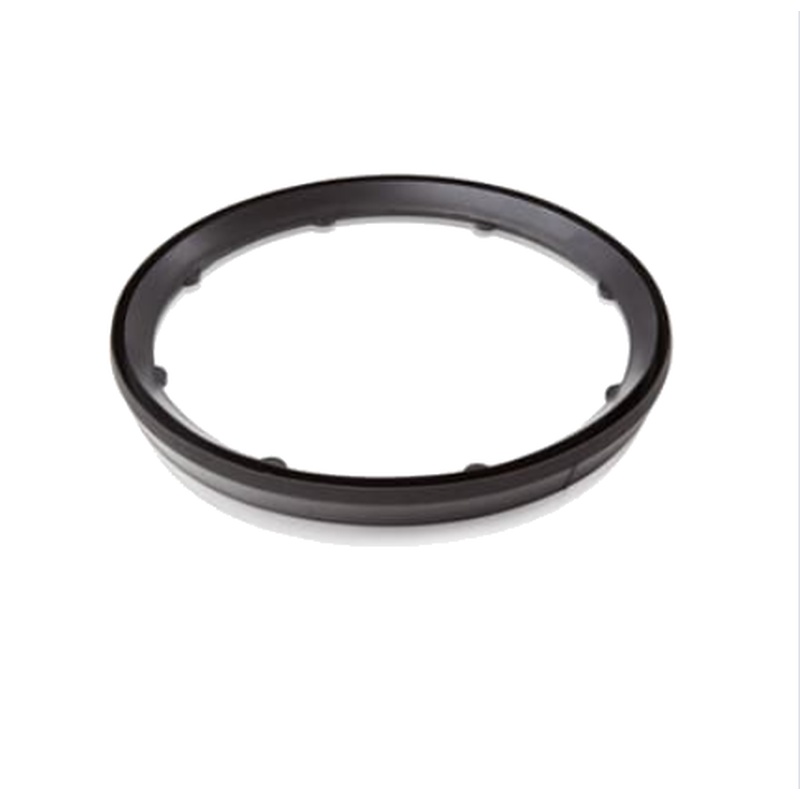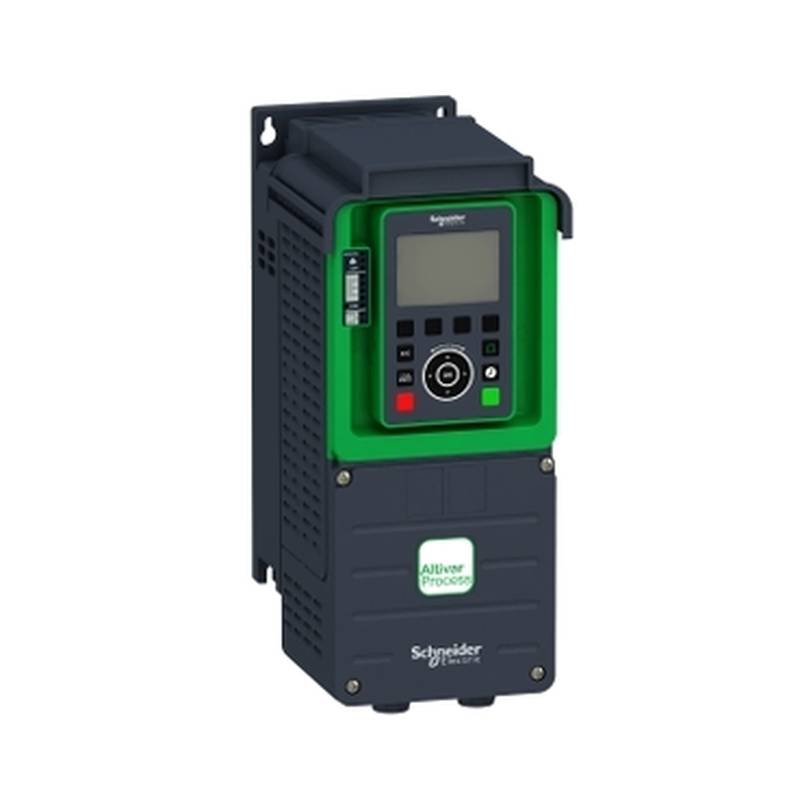
The Siemens 5SU1356-1KK16 is a high-performance 16A 30mA 1P+N Type C RCCB (Residual Current Circuit Breaker) designed for robust earth leakage protection. This unit offers superior safety and reliability, essential for safeguarding personnel and equipment against electrical hazards in residential, commercial, and industrial settings. Its advanced tripping characteristics and compact design facilitate seamless integration into various electrical distribution systems, ensuring compliance with stringent safety standards.
Product Specifications
| Feature | Specification |
| :---------------------- | :---------------------------------- |
| Product Type | RCCB (Residual Current Circuit Breaker) |
| Manufacturer | Siemens |
| Model Number | 5SU1356-1KK16 |
| Rated Current (In) | 16A |
| Rated Residual Operating Current (IΔn) | 30mA |
| Number of Poles | 1P+N (1 Pole + Neutral) |
| Tripping Characteristic | Type C |
| Breaking Capacity (Icn) | 6kA |
| Voltage Rating (Ue) | 230/400V AC |
| Frequency | 50/60 Hz |
| Terminal Type | Screw Terminal |
| Degree of Protection | IP20 |
| Mounting Type | DIN Rail |
| Color | White |
Core Features & Market Positioning
The Siemens 5SU1356-1KK16 stands out due to its reliable tripping performance, crucial for preventing electric shocks and fires caused by earth faults. As a Type C breaker, it offers enhanced immunity to nuisance tripping from transient overcurrents, making it ideal for circuits with moderate inrush currents, such as those powering lighting or socket outlets. This robust design positions it as a dependable choice for applications demanding high safety integrity without compromising operational continuity. Siemens' reputation for quality and innovation further solidifies this RCCB's market standing as a premium protective device.
Key Application Scenarios
This 16A 30mA 1P+N C-Type RCCB is extensively deployed in domestic electrical installations to protect individual circuits, particularly those feeding sensitive electronic equipment or areas with increased risk of electric shock, such as kitchens and bathrooms. In commercial settings, it provides essential safety for office environments, retail spaces, and service sector buildings, ensuring compliance with electrical safety regulations. For industrial applications, while higher current or specialized types might be needed for heavy machinery, this breaker is suitable for control circuits, auxiliary power supplies, and lighting circuits where precise earth leakage detection at 30mA is paramount.
Practical System Integration Guidance
Integrating the Siemens 5SU1356-1KK16 is straightforward due to its standard DIN rail mounting and terminal design. Ensure the main power supply is de-energized before commencing installation. Connect the line conductors to the designated input terminals and the neutral conductor to the neutral input terminal, adhering strictly to the polarity indicated on the device. The load-side terminals then connect to the protected circuit. For a 1P+N device, both the live and neutral conductors of the protected circuit are switched by the RCCB, ensuring complete isolation upon tripping. Proper torque should be applied to the screw terminals to ensure a secure connection and prevent overheating.
Operation and Risk Mitigation
The primary function of the 5SU1356-1KK16 is to detect small, persistent imbalances between the live and neutral conductors, indicative of current flowing to earth. When the residual current exceeds the rated tripping current of 30mA, the RCCB rapidly disconnects the circuit, mitigating the risk of electric shock and fire. Regular testing using the integrated test button (typically marked 'T') is crucial to verify its operational integrity. Pressing the test button simulates an earth fault, and the breaker should trip immediately. If it fails to trip, it indicates a malfunction, and the device must be replaced.
Scalability & Long-Term Value
The Siemens 5SU1356-1KK16 integrates seamlessly within Siemens' broader electrical distribution portfolio, offering excellent compatibility with other Siemens circuit breakers, busbars, and enclosures. This compatibility facilitates straightforward system upgrades and expansions. While this specific model is a standalone protective device, its robust construction and adherence to international standards ensure a long operational lifespan, reducing the need for frequent replacements. For enhanced monitoring and integration into smart building or IIoT systems, consider pairing it with compatible Siemens monitoring relays or smart meter solutions, although this particular RCCB itself does not possess direct digital communication capabilities.
Frequently Asked Questions
What is the breaking capacity of the Siemens 5SU1356-1KK16?
The Siemens 5SU1356-1KK16 offers a rated breaking capacity (Icn) of 6kA. This ensures it can safely interrupt fault currents up to this level without being destroyed. It is suitable for most residential and commercial distribution boards.
This breaking capacity rating is critical for ensuring the device's safety and reliability during fault conditions. It means the breaker can handle short-circuit currents up to 6000 Amperes. The selection of the correct breaking capacity is vital to protect the downstream electrical installation.
Always ensure the breaking capacity of your protective devices meets or exceeds the prospective short-circuit current at the point of installation. This is a fundamental safety requirement in electrical system design.
Can the Siemens 5SU1356-1KK16 be used for motor protection?
While the Type C characteristic offers some immunity to inrush currents, this RCCB is primarily designed for earth leakage protection, not direct motor overload or short-circuit protection. Motor protection typically requires dedicated thermal-magnetic circuit breakers or motor protection relays.
For motor circuits, you would typically use a Type D circuit breaker or a specific motor protection device. This 16A 30mA RCCB is better suited for circuits where the primary concern is preventing electric shock. Using it solely for motor protection might lead to nuisance tripping or inadequate overload protection.
Always consult the specific motor's nameplate and relevant electrical codes to select the appropriate protection devices. Combining an RCCB for earth leakage with a suitable motor protection device is often the best practice.
What does 1P+N mean for this Siemens RCCB?
1P+N signifies that the Siemens 5SU1356-1KK16 is a single-pole plus neutral device. It means that both the live (phase) conductor and the neutral conductor are switched by the RCCB. This ensures complete isolation of the circuit when the breaker trips.
This design is common for protecting single-phase circuits where it is necessary to interrupt both conductors for complete safety. It provides a higher level of protection compared to a single-pole RCCB that only switches the live conductor. The neutral conductor is also a current-carrying conductor.
When wiring, ensure the live conductor is connected to the line input and the neutral to the neutral input. The corresponding conductors from the protected load are then connected to the output terminals.
How do I test the Siemens 5SU1356-1KK16?
The Siemens 5SU1356-1KK16 features an integrated test button, usually marked with a 'T'. To test, ensure the breaker is energized and the circuit it protects is connected and functional. Press and hold the test button firmly.
Upon pressing the test button, the RCCB should immediately trip, disconnecting power to the protected circuit. This action simulates a residual current fault, verifying the tripping mechanism. If the breaker does not trip, it is faulty and requires immediate replacement.
It is recommended to perform this test regularly, typically monthly, to ensure the continued safe operation of the RCCB. Always follow the manufacturer's specific instructions for testing procedures and safety precautions.
What is the significance of the 30mA residual operating current?
A residual operating current (IΔn) of 30mA is the standard sensitivity for earth leakage protection designed to prevent electric shock to people. This level of current is generally considered the threshold above which a person can experience a dangerous electric shock.
When the current flowing out on the live conductor does not return through the neutral conductor (due to leakage to earth), this imbalance is detected. If this imbalance reaches 30mA, the RCCB trips very quickly, typically within 25-40 milliseconds. This rapid disconnection minimizes the duration and severity of potential electric shock.
While 30mA is ideal for personnel protection, higher residual current ratings (e.g., 100mA or 300mA) are available for fire protection or in installations where nuisance tripping might occur with sensitive equipment.
What does the 'C' in 5SU1356-1KK16 Type C signify?
The 'C' in the product designation refers to the tripping characteristic of the circuit breaker. A Type C breaker is designed to tolerate higher inrush currents than a standard Type B breaker, without tripping prematurely. This makes it suitable for circuits with moderate inductive loads.
Examples of loads that commonly benefit from Type C protection include fluorescent lighting, some types of heating elements, and outlets serving general-purpose equipment. These devices can exhibit inrush currents that are typically 5 to 10 times their normal operating current for a brief period upon energization.
It's important to select the correct tripping characteristic based on the expected load. Using a Type C breaker on a load that consistently draws very high inrush currents (e.g., large motors) might still cause nuisance tripping; for such applications, a Type D breaker is usually required.
Is the Siemens 5SU1356-1KK16 compatible with other brands of distribution boards?
The Siemens 5SU1356-1KK16 is designed to mount on a standard 35mm wide top-hat DIN rail, which is an industry standard. Therefore, it is generally compatible with most distribution boards that accommodate standard DIN rail-mounted devices.
However, physical dimensions and terminal access can sometimes vary between manufacturers. While the mounting is standard, ensure sufficient space and accessibility for wiring and the test button operation within your specific distribution board. It's always advisable to check the physical dimensions against your enclosure's internal layout.
For optimal performance and guaranteed compatibility, using Siemens' own range of enclosures and busbar systems is recommended. This ensures a perfect fit and reliable electrical connection.
What is the rated voltage for this RCCB?
The rated voltage (Ue) for the Siemens 5SU1356-1KK16 is 230/400V AC. This indicates its suitability for use in standard single-phase (230V) and three-phase (400V) distribution systems commonly found in residential, commercial, and light industrial applications.
The 230V rating typically applies to single-phase circuits where the RCCB is installed across the phase and neutral. The 400V rating is relevant for three-phase systems, though this specific 1P+N unit is primarily used for single-phase branch circuits within a larger three-phase installation.
Always ensure that the voltage of your electrical system does not exceed the rated voltage of the protective device. Operating a device outside its specified voltage range can lead to malfunction, damage, and safety hazards.
How is the neutral conductor handled in a 1P+N RCCB?
In a 1P+N (1 Pole + Neutral) RCCB like the Siemens 5SU1356-1KK16, both the phase (live) conductor and the neutral conductor are switched and protected. This means that when the RCCB trips, it disconnects both conductors from the power supply.
This is an important safety feature. In a simple single-pole RCCB, only the live conductor is interrupted, leaving the neutral conductor potentially still connected to the supply. The 1P+N design provides a more complete isolation of the circuit, which is crucial for preventing electric shock hazards.
When installing, the incoming live wire from the supply connects to the 'line' input terminal, and the incoming neutral wire connects to the 'neutral' input terminal. The outgoing live and neutral wires to the protected circuit are then connected to the respective output terminals.
What troubleshooting steps can be taken if the RCCB trips frequently?
Frequent tripping of the Siemens 5SU1356-1KK16 usually indicates a persistent earth leakage fault in the protected circuit or an overloaded circuit condition. The first step is to disconnect all loads from the circuit protected by the RCCB.
Once all loads are disconnected, reset the RCCB. If it stays on, a fault exists within one of the connected appliances or wiring. Reconnect the loads one by one, resetting the RCCB after each reconnection, until the tripping recurs. The last appliance or circuit reconnected is the source of the fault.
If the RCCB trips even with all loads disconnected, the fault may be within the RCCB itself, the wiring within the distribution board, or the incoming supply to the RCCB. In such cases, it is essential to consult a qualified electrician for diagnosis and repair, as the device may need replacement or further investigation into the circuit wiring.
























